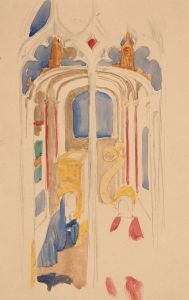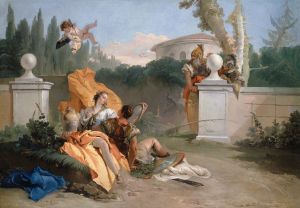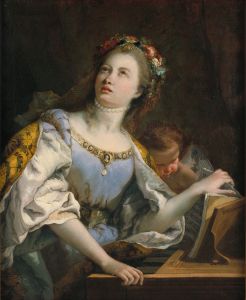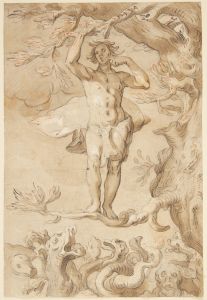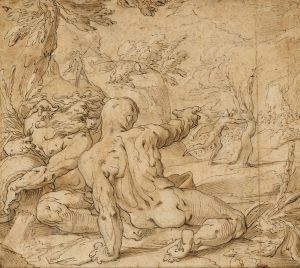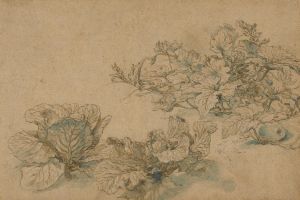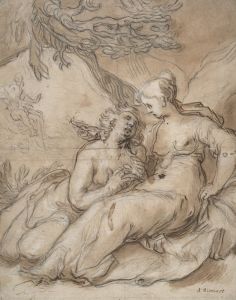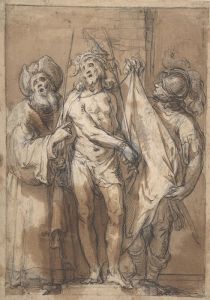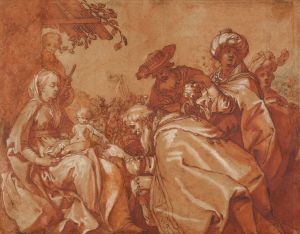
The Annunciation
A hand-painted replica of Abraham Bloemaert’s masterpiece The Annunciation, meticulously crafted by professional artists to capture the true essence of the original. Each piece is created with museum-quality canvas and rare mineral pigments, carefully painted by experienced artists with delicate brushstrokes and rich, layered colors to perfectly recreate the texture of the original artwork. Unlike machine-printed reproductions, this hand-painted version brings the painting to life, infused with the artist’s emotions and skill in every stroke. Whether for personal collection or home decoration, it instantly elevates the artistic atmosphere of any space.
Abraham Bloemaert, a prominent Dutch painter and printmaker, created "The Annunciation," a work that exemplifies his mastery in the Mannerist and early Baroque styles. Bloemaert was born in 1566 in Gorinchem, the Netherlands, and became a leading figure in the Utrecht school of painting. His works are known for their dynamic compositions, vibrant colors, and intricate details, which are evident in "The Annunciation."
"The Annunciation" depicts the biblical scene in which the Angel Gabriel announces to the Virgin Mary that she will conceive and become the mother of Jesus, the Son of God. This subject has been a popular theme in Christian art, symbolizing the moment of the Incarnation. Bloemaert's interpretation of this scene is notable for its dramatic use of light and shadow, a technique that enhances the spiritual and emotional impact of the moment.
In Bloemaert's painting, the figures of Mary and Gabriel are central to the composition. Mary is often portrayed with a look of humility and grace, reflecting her acceptance of the divine message. Gabriel, typically depicted with wings, gestures towards Mary, emphasizing the divine nature of the announcement. Bloemaert's attention to detail is evident in the delicate rendering of the figures' expressions and the flowing drapery of their garments.
The setting of "The Annunciation" is usually an interior space, often a domestic setting that symbolizes purity and sanctity. Bloemaert's use of architectural elements and perspective adds depth to the composition, drawing the viewer's eye towards the central figures. The inclusion of symbolic elements, such as lilies representing purity or a dove symbolizing the Holy Spirit, is common in depictions of the Annunciation and may be present in Bloemaert's work.
Bloemaert's "The Annunciation" reflects the influence of both Italian and Northern European artistic traditions. His exposure to Italian art, particularly during his travels, is evident in the balanced composition and the use of chiaroscuro, a technique that contrasts light and dark to create a sense of volume and three-dimensionality. At the same time, his Northern European roots are visible in the meticulous attention to detail and texture.
Throughout his career, Bloemaert was a versatile artist, producing religious, mythological, and genre scenes. He was also a respected teacher, with notable pupils such as Gerrit van Honthorst and Hendrick ter Brugghen, who became prominent figures in the Dutch Golden Age of painting. Bloemaert's influence extended beyond his lifetime, as his works continued to inspire artists in the Netherlands and beyond.
"The Annunciation" by Abraham Bloemaert is a testament to his skill and artistic vision, capturing a pivotal moment in Christian theology with sensitivity and depth. The painting remains an important example of early Baroque art, showcasing Bloemaert's ability to blend narrative, symbolism, and technical prowess in a harmonious composition.





